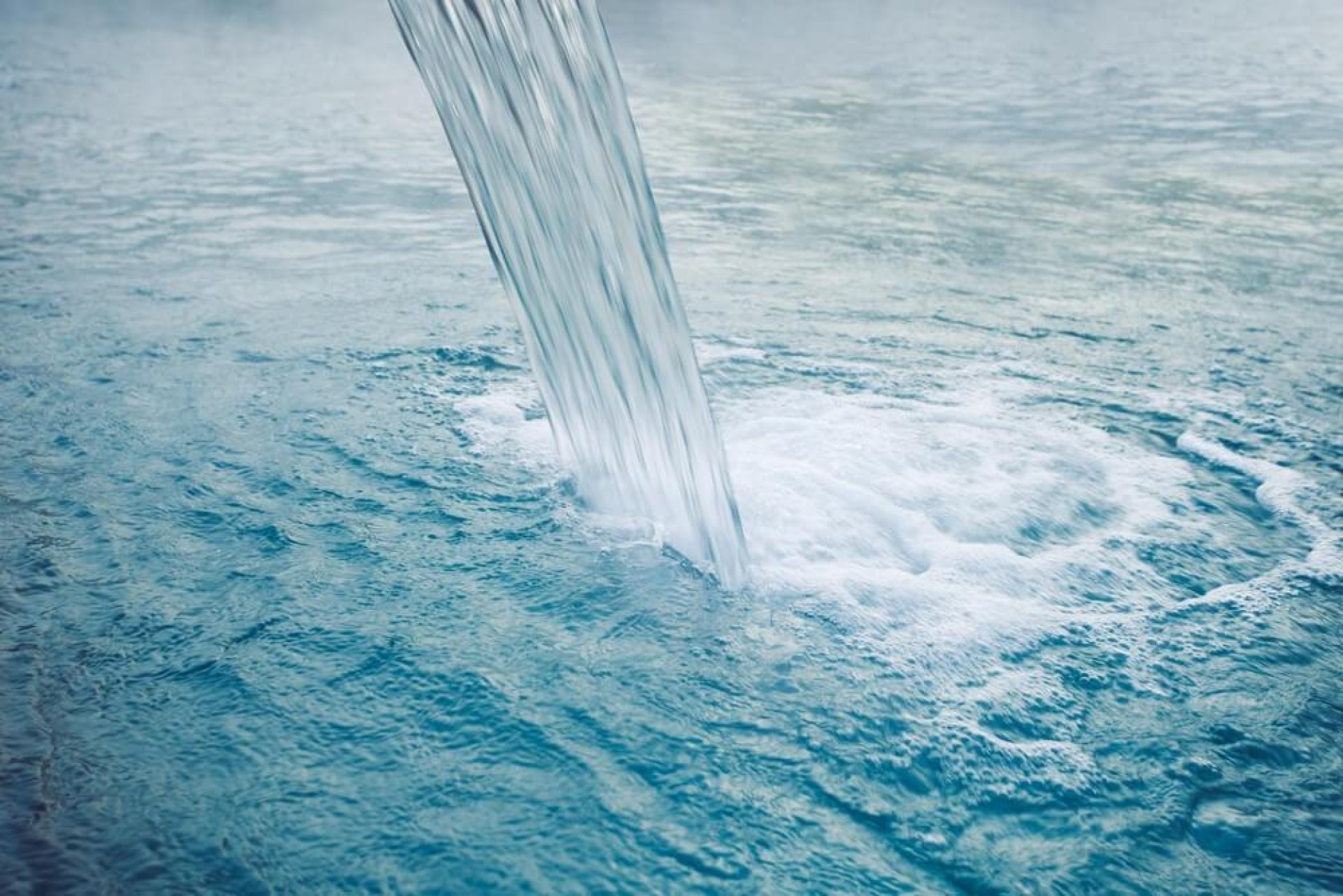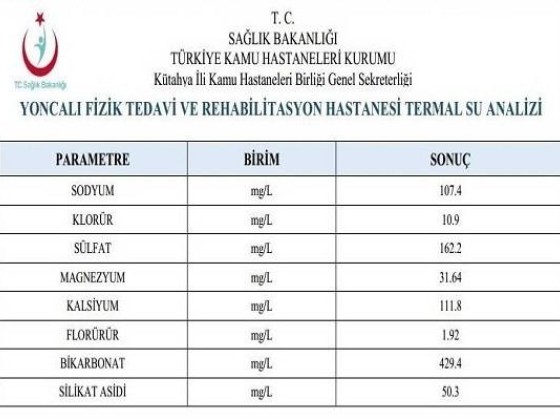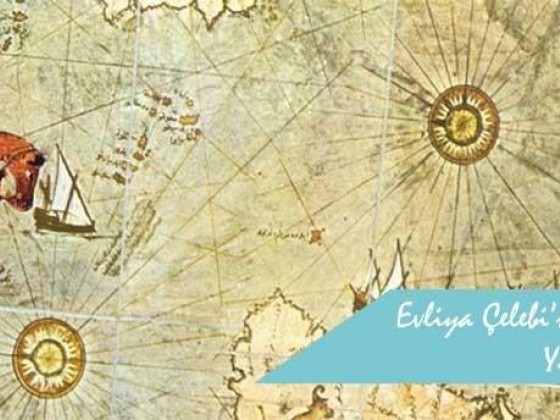
About Our Thermal Water

Features of Our Thermal Water
The spring outlet temperature of Yoncalı Thermal Water is 40-44 degrees and the total mineral concentration is 782.565 mg/lt. Disorders for which it has therapeutic properties:
- Psoriasis Rheumatism
- Nevragia (Inflammation Spreading Along the Nerve)
- Neuritis (Nerve End Inflammations)
- Periatritis (Joint Membrane Inflammation)
- Arthrosis (Joint Calcification)
- Rheumatoid Arthritis (Febrile Rheumatic Diseases)
- Cellulite (Soft Tissue Rheumatism)
- Sciatica (Compression of the Sciatic Nerve)
- Myalgic (Muscle Pains) — Gynecological Diseases
- Gynecological Diseases (In Chronic Periods)
- Polio Sequelae (Polio Sequelae)
- Hemiplegia (Paralysis of Part of the Body)
- Paraplegia (Paralysis of Both Lower Legs)
- Fracture and Dislocation Sequelae
- Spiritual Fatigues Intestinal
- Renal Tract Diseases — Anti Aging

Yoncalı in Evliya Çelebi's Travelogue
The Evsaf of Germâb of Kütâhiyye
They call it Yoncalı hot spring, it has a mild and pleasant water. The people of Kütâhiyye come with their hayme and hargahs during the cherry season, and they spend ten days in this hot spring. It has a quality of seventy days. It is even a useful hot spring for leprosy, leprosy and da'ü's-salâleb diseases. Sultan Keyhusrev built a dome on it, high and ja-be-ja halvets, they are serapa masonry buildings. And the men and women of Dagestan become a shelter, and in the middle of the endless corridors of the mountains, everyone with their women servants takes pleasure in pleasure, and acquires goods and drinks, and becomes very happy. And from the draws of the men and women servants, so many things, such as beverages and alcoholic beverages, come and become spoils of war, it cannot be described. Indeed, it is a place of pleasure and diversion. Watching the moment, saying goodbye to all his beloved ones [Y 14b], and singing the tunes from the well-lit [u] robe to the east, in ten hours, there is a seventy-day speciality. It is even a beneficial remedy for leprosy, leprosy and the diseases of the lower classes. Sultan Keyhusrev built a high dome and jaba-ja seclusion rooms on it, and they are buildings made of masonry.
Features of Kütahya Thermal Spring
The thermal spring called Yoncalı thermal spring has pleasant water at moderate temperatures. All the people of Kütahya set up large and small tents during the cherry season, stay here for five or ten days at a time, have fun, and enter this hot spring bath to have a healthy body. It is a cure for seventy troubles. In fact, it is the thermal spring that cures skin diseases such as (leprosy), irreparable wounds on the body, (beras) spot disease on the skin, and (daüs saleb) hair loss. Sultan Keyhüsrev had masonry buildings built with domes and private private rooms.
Everyone enjoys having fun with their families in the neighborhoods surrounded by mountains and gardens on all sides, where trees extend to the end. Such a variety of fruits, vegetables and food and beverages come from the surrounding villages that it is not possible to describe the market. It is truly a place to visit and see for pleasure.
Yoncalı Thermal Springs and the Legend of Gülümser Hatun
According to the legend: Yoncalı, which is a cure for all ills, was known for hundreds of years as a swamp with hot water boiling from the ground at the foot of Kirazlı Mountain.
During the Anatolian Seljuk State, Sultan II. Alaaddin Keykubat had a sickly daughter named Gülümser Hatun. She fell ill at a young age and no cure could be found for her ailment. Upon the suggestion of those who saw a mangy fox recovering in the swamp in Yoncalı, they washed Gülümser Hatun in hot water. Gülümser Hatun, who washed here for a while, left Yoncalı, where she was brought as a paralyzed person, smiling and regaining her health.
Sultan II. Alaaddin Keykubat had a large bathhouse with a pool and a mosque built in Yoncalı so that other people could also recover. It is understood from the inscription that these structures were built in 1233.